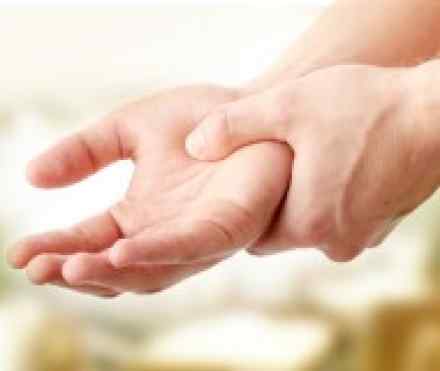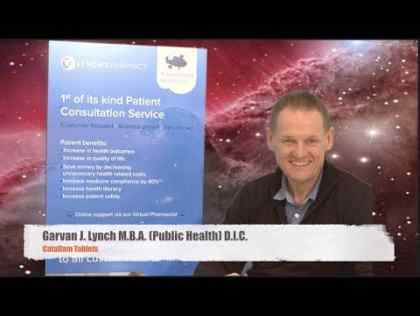
What is it?
Wrist pain is a common complaint. Many types of wrist pain are caused by sudden injuries that result in sprains or fractures. But wrist pain also can be caused by more long-term problems — such as repetitive stress, arthritis and carpal tunnel syndrome.
Because so many factors can lead to wrist pain, diagnosing the exact cause of long-standing wrist pain sometimes can be difficult. A precise diagnosis is crucial, however, because proper treatment depends on the cause and severity of your wrist pain.
Symptoms
Wrist pain may vary, depending on what's causing it. For example, osteoarthritis pain is often described as being similar to a dull toothache, while tendinitis usually causes a sharp, stabbing type of pain. The precise location of your wrist pain also can give your doctor clues as to what might be causing your symptoms.
Causes
Your wrist is a complex joint made up of eight small bones arranged in two rows between the bones in your forearm and the bones in your hand. Tough bands of ligament connect your wrist bones to each other and to your forearm bones and hand bones. Tendons attach muscles to bone. Damage to any of the parts of your wrist can cause pain and affect your ability to use your wrist and hand.
Injuries
Sudden impacts. The most common method of injuring your wrist is when you fall forward onto your outstretched hand. This can cause sprains, strains and even fractures.Repetitive stress. Any activity that involves repetitive wrist motion — from hitting a tennis ball or bowing a cello to driving cross-country — can inflame the tissues around joints or cause stress fractures, especially when you perform the movement for hours on end without a break. De Quervain's disease is a repetitive stress injury that causes pain at the base of the thumb.
Arthritis
- Osteoarthritis. In general, osteoarthritis in the wrist is uncommon, usually occurring only in people who have injured that wrist in the past. Osteoarthritis is caused by wear and tear on the cartilage that cushions the ends of your bones. Pain that occurs at the base of the thumb may be caused by osteoarthritis.
- Rheumatoid arthritis. A disorder in which the body's immune system attacks its own tissues, rheumatoid arthritis is common in the wrist. If one wrist is affected, the other one usually is, too.
Other diseases and conditions
- Carpal tunnel syndrome. Carpal tunnel syndrome develops when there's increased pressure on the median nerve, which passes through the carpal tunnel, a passageway in the palm side of your wrist.
- Kienbock's disease. This disorder typically affects young adults and involves the progressive collapse of one of the small bones in the wrist. Kienbock's disease occurs when the blood supply to this bone is compromised.
- Ganglion cysts. These soft tissue cysts occur most often on the top of your wrist opposite your palm. Smaller ganglion cysts seem to cause more pain than do larger ones.
Risk factors
Wrist pain can happen to anyone — whether you're very sedentary, very active or are somewhere in between. But certain factors can increase your risk.
Sports participation
Wrist injuries are common in many sports, including:
- Baseball
- Basketball
- Bowling
- Football
- Golf
- Gymnastics
- Hockey
- Skateboarding
- Snowboarding
- Tennis
- Rollerblading
Age
Older adults are more likely to have osteoporosis, which makes bones brittle and more susceptible to fractures, than younger people are. They're also more likely to fall and to develop arthritis.
Repetitive work
Almost any activity that involves your hands and wrists — even knitting and cutting hair — if performed forcefully enough and often enough can lead to disabling wrist pain.
Pregnancy
Some women develop carpal tunnel in the second and third trimesters of pregnancy, in part because of hormonal changes. Shifts in the balance of estrogen and progesterone cause the body to retain more fluid, which increases swelling in the carpal tunnel.
Diseases and conditions
Your risk of developing wrist pain is increased if you have:
Diagnosis
In some cases, your doctor may suggest imaging tests, arthroscopy or nerve tests to help pinpoint the cause of your wrist pain.
Imaging tests
- X-rays. Using a small amount of radiation, simple X-rays can reveal bone fractures, as well as evidence of osteoarthritis.
- Computerized tomography (CT) scan. CT scans can provide more-detailed views of the bones in your wrist. A CT scan takes X-rays from several directions and then combines them to make a two-dimensional image.
- Bone scan. In a bone scan, a small amount of radioactive material is injected into your bloodstream. This makes injured parts of your bones brighter on the resulting scan images. Bone scans are particularly useful in detecting stress fractures.
- Magnetic resonance imaging (MRI). MRIs use radio waves and a strong magnetic field to produce detailed images of your bones and soft tissues. For a wrist MRI, you may be able to insert your arm into a smaller device, rather than have your entire body slide into a full-size MRI machine.
Arthroscopy
If imaging test results are inconclusive, your doctor may perform an arthroscopy, a procedure in which a pencil-sized instrument is inserted into your wrist via a small incision in your skin. The instrument contains a light and a tiny camera. Images are projected onto a television monitor.
Nerve tests
If your doctor thinks you have carpal tunnel syndrome, he or she might order an electromyogram (EMG). This test measures the tiny electrical discharges produced in your muscles. A needle-thin electrode is inserted into the muscle, and its electrical activity is recorded when the muscle is at rest and when it's contracted. Nerve conduction tests also are performed as part of an EMG to assess if the electrical impulses are slowed in the region of the carpal tunnel.
References
http://www.medicinenet.com/wrist_pain/symptoms.htm
http://www.mayoclinic.org/diseases-conditions/wrist-pain/basics/definition/con-20031860
http://www.webmd.com/a-to-z-guides/finger-hand-and-wrist-problems-noninjury-topic-overview
http://my.clevelandclinic.org/health/diseases_conditions/hic_Arthritis/hic_Arthritis_of_the_Hand_and_Wrist





